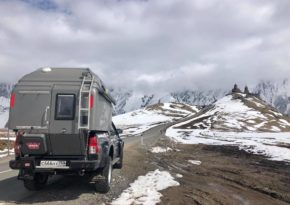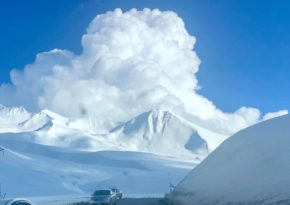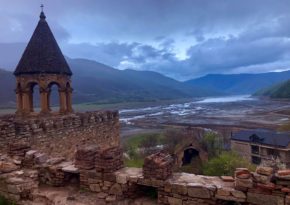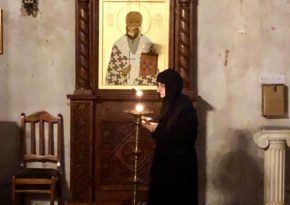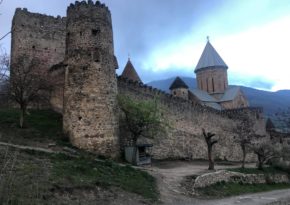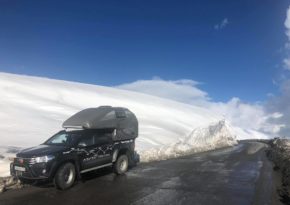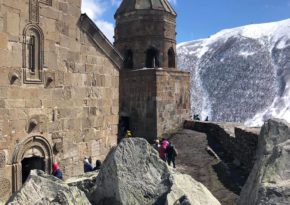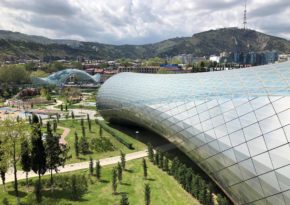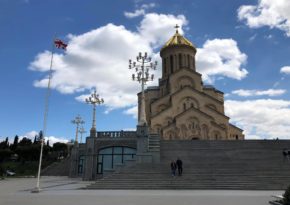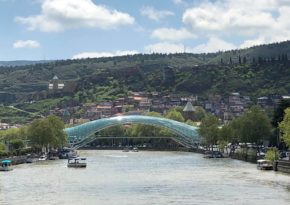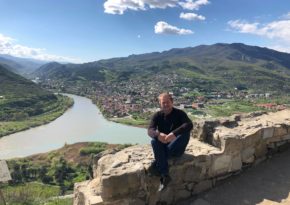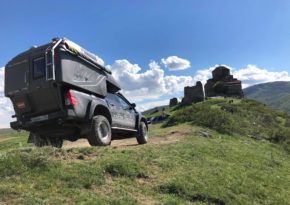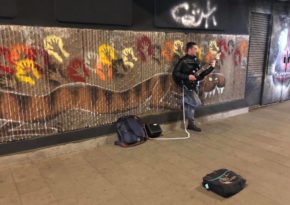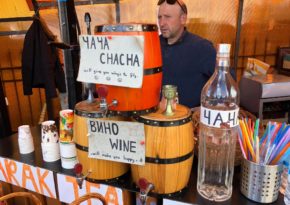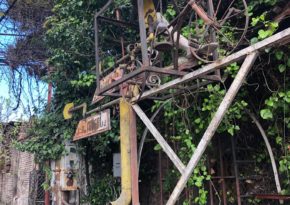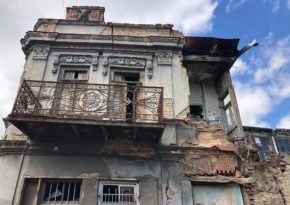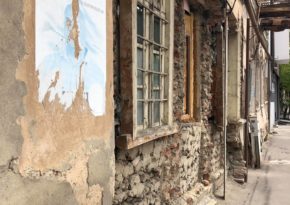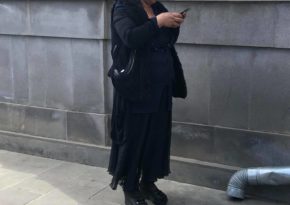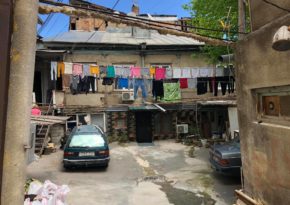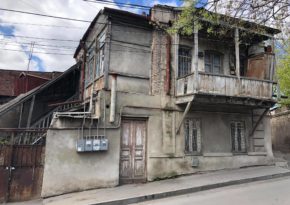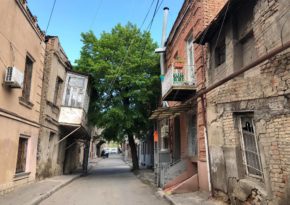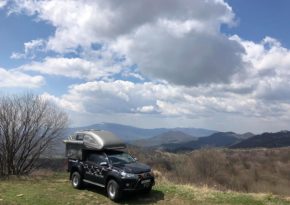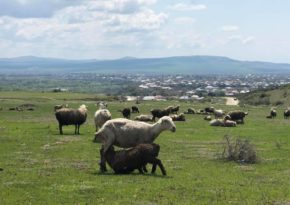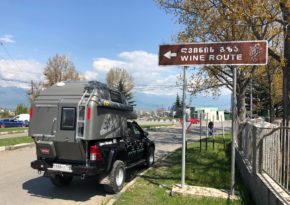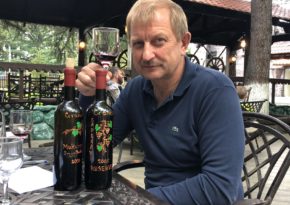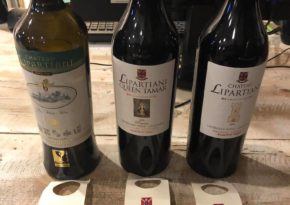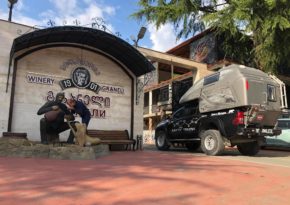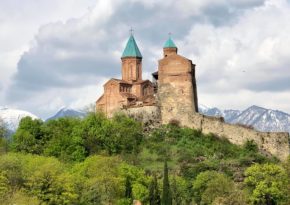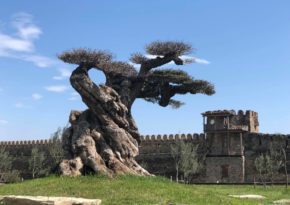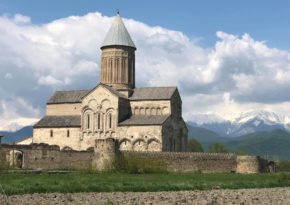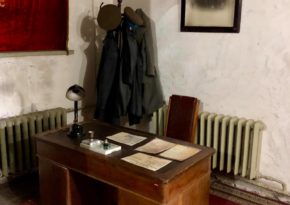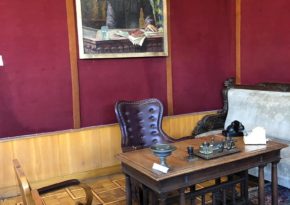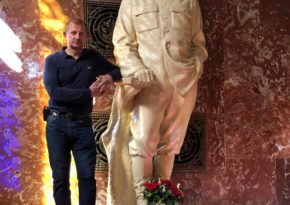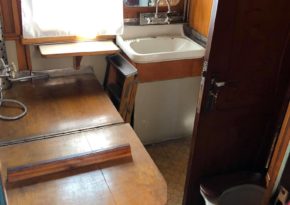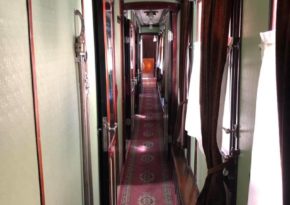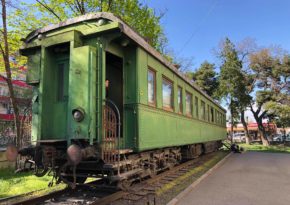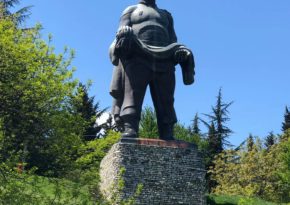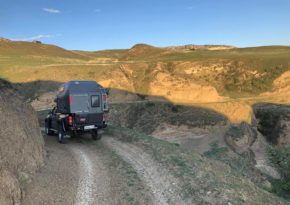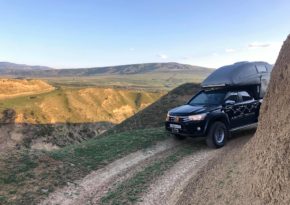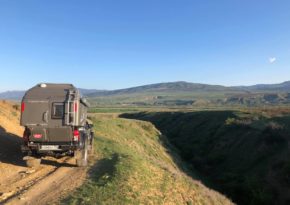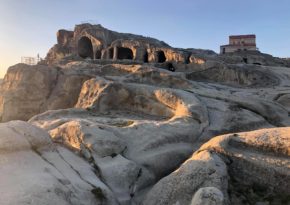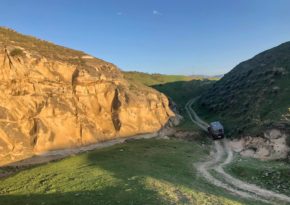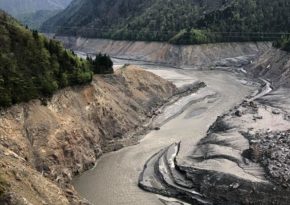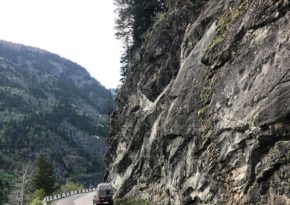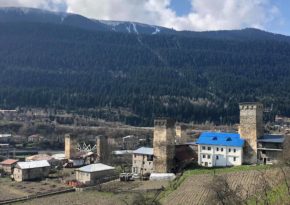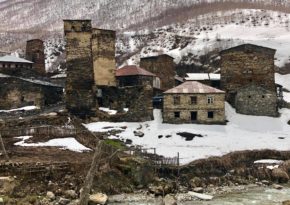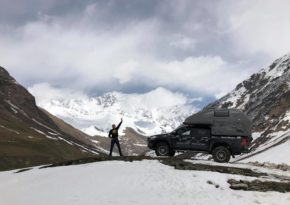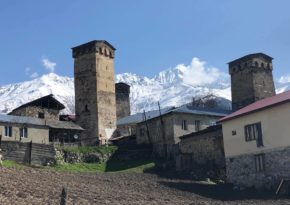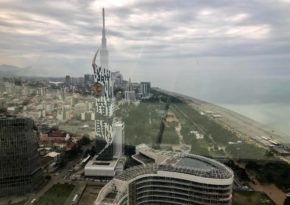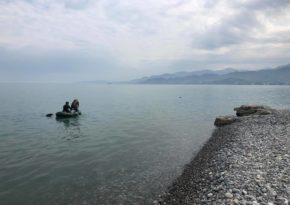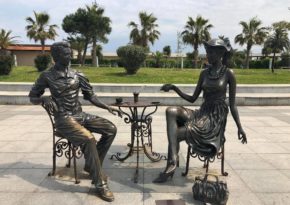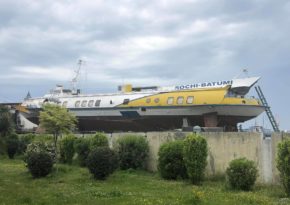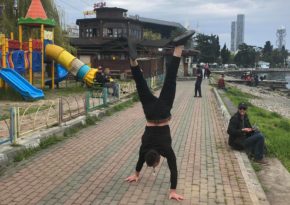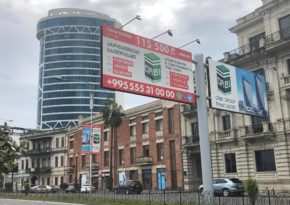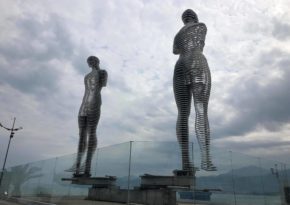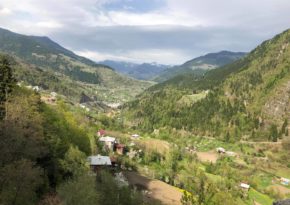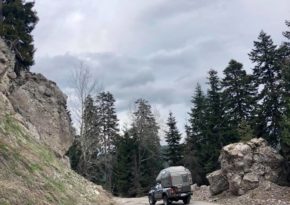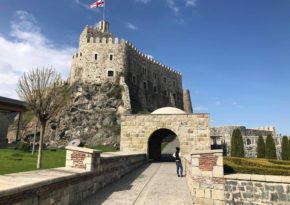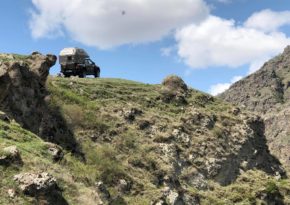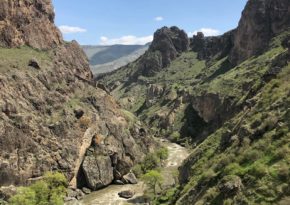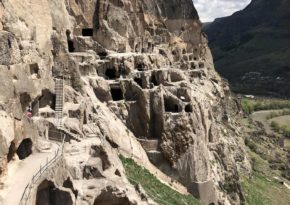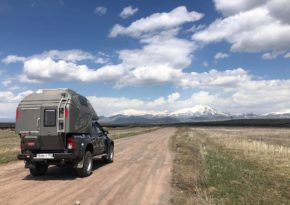Let's go to Georgia for good wine and the sun! A car journey. April, 2019.
And here we go to Georgia again but this time on four wheels and with our "own house"!
We are going to Tbilisi along the most beautiful Georgian military road across the Cross Pass. Our journey around one of the most wonderful and hospitable countries in the world is on! We have thousands of kilometers of gorgeous roads and mountain serpentines, ancient temples and monasteries, khinkali, khachapuri and, of course, khvanchkara, kindzmarauli and saperavi ahead!
Tbilisi is perhaps the most kind-hearted, welcoming and comfortable capital in the world in relation to tourists from Russia. I definitely feel home here (and maybe even better than at home)! That's why I'm coming here for the fourth time.
Perhaps it's not that fine to live here permanently, but this fact is understandable. Tourism and emigration are regarded as different things for a reason and they should not be equated with each other. :)
But I recommend everyone to spend some time on the vacations in this country. You definitely won't regret it!
There you will see wide avenues and a very beautiful embankment of the Kura, ancient fortresses and temples, modern structures made of glass and concrete and numerous cafés and restaurants with delicious Georgian cuisine, which won't let you lose any weight. No use to remind of the fantastic Georgian wine, which is offered here at every corner.
Today we have been walking around Tbilisi on foot all day and I haven't met a single person who didn't speak Russian, so there were absolutely no problems with communication. The Georgians are very friendly and will be happy to talk to you, even if you just ask the first stranger you meet: "How can I get to the library?" And it is likely to happen that after a while you will continue the dialogue at his house or sitting at a table with a glass of red wine. It is simply impossible to imagine such a situation in any European city.
In the evening, when we were returning from Mtskheta, the ancient capital of Georgia, we got into a traffic jam in the city centre. We were crawling a 5 kilometre distance for about an hour, just like we do at home (in Moscow, to be presise).
Tbilisi has got two faces.
There is the Tbilisi that welcomes its guests as a hospitable and kind-hearted host. It will lead you along its most beautiful, clean "rooms" with graceful decoration; invite you for lunch; feed you and treat you to the best wine from its cellar. In order to see this Tbilisi, you just need to contact one of the local guides (who offer their services everywhere) or search for three words on the Internet: "sights of Tbilisi", and make your own route.
But there is also another Tbilisi. It lives in the neighbour street, a stone's throw from the noisy, bright avenues, where street musicians entertain crowds of idly walking tourists and souvenir sellers offer them all the stuff with which Georgia may be associated with: shaggy hats, burkas, drinking horns, fake daggers and magnets with the image of Joseph Vissarionovich.
If you turn off the tourist route into a narrow alley and walk a few dozen steps, you will find yourself in a quiet, modest district or street, where there are no neon advertisements and bright lights and music does not sound. This is the old Tbilisi with its two- or three-storey stone houses, from which walls the plaster has been crumbling for a long time, and the half-ruined balconies, propped up by some wooden or metal racks, are about to collapse on your head. Most of these houses were built more than a century ago and it seems that they haven't been repaired since then.
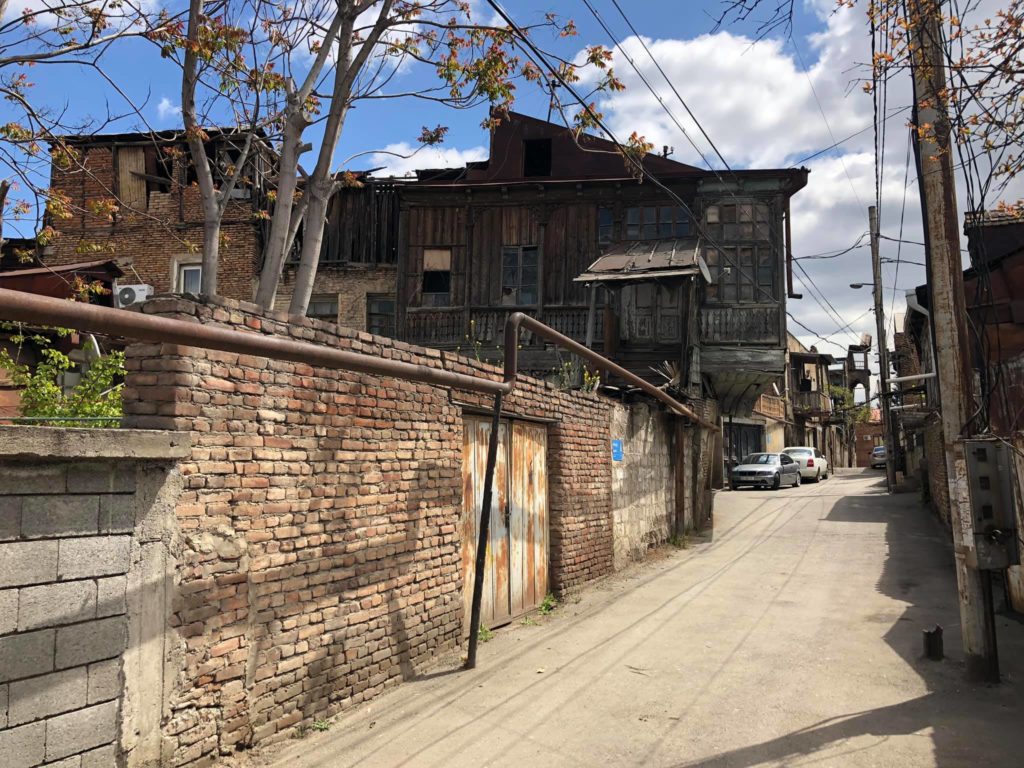
Despite the fact that many buildings there are in disrepair, life goes on as usual in them. This is especially evident when you look into one of the small courtyards. A typical sight is a dog or cat lying under an old Lada or Moskvitch car, clothes are being dried on the balcony railing and on ropes stretched across the yard, a metal chimney sticks out of the wall, an elderly woman is sleeping on an old chair while children are running around and playing…
I really like this one Tbilisi, because everything is genuine here: people, their houses, their life. And you see that's all without the tourist entourage.
Kakheti
In the morning we slowly crawled out of Tbilisi through traffic jams and continued our journey around Georgia. Today we're going to the famous Alazani Valley, then to the wine region called Kakheti and its capital, Telavi.
There is about a hundred kilometer distance along the picturesque mountain road from Tbilisi to Telavi. We overcame the pass that is 1650 m high and saw a wonderful view of the Alazani Valley, a unique place in the east of Georgia with its own climate and soil, which are perfect for growing grapes.
And grapes are planted on thousands of hectares here. We came across signmarks with the names of different wineries like "Chateaux …" (sounds French!) along all the way. And the road itself is also not just an ordinary road, but the "Wine Road"! Wow!
After entering into a partnership with the Russian market, Georgian wineries began to appear and develop rapidly. Apparently, this is a very profitable business and an inexperienced and unassuming Russian consumer is the reason for the prosperity of Georgian winemaking.
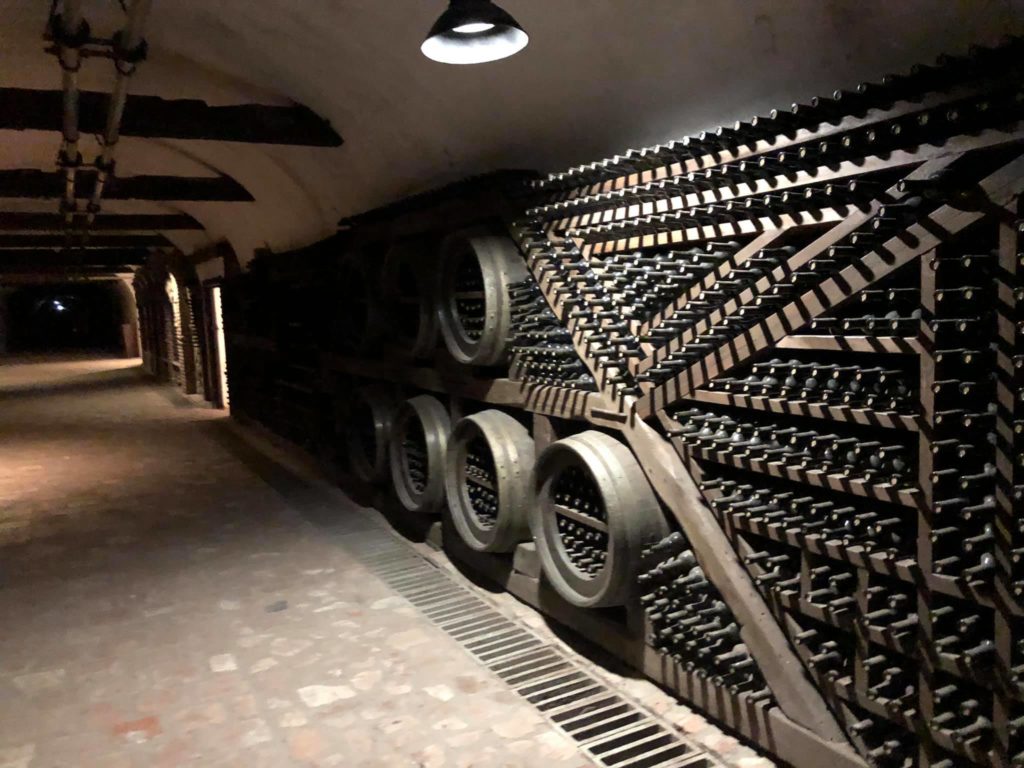
Of course, the wine of a good quality is produced in Georgia as well (however, in limited numbers and not at every enterprise). We managed to visit one of the good wineries, the Khareba one, which is located in the outskirts of the town Kvareli. (41°56'08.4"N 45°50'01.72"E). I recommend everyone who will travel around Kakheti to visit this gorgeous place. You can go on an excellent excursion to the wine storages, which appear to be tunnels laid through the rock more than 7 km long in total. Here you can taste and buy the best sorts of Georgian wine: khvanchkara, kindzmarauli, odjaleschi, saperavi and so on.
But Kakheti is notable not only for its wine. Numerous ancient castles, fortresses and temples would delight fans of history and architecture.
Not far from Telavi there is a village named Alaverdi. And if you decide to go there, you will see a perfectly preserved monastery complex with a majestic Cathedral built in the 11th century. (42°01′56.94″N 45°22′37.9″E)
At the end of the day we had dinner in the town of lovers, Signagi. Then we followed a steep serpentine and climbed to the top of the mountain, which offered an amazing view of this picturesque town located behind the fortress wall. And from the same viewpoint we also saw a stunning sight of the Alazani Valley!
( 41°37'40.26"N 45°55'13.21"E )
You should come here too! You definitely won't regret it!
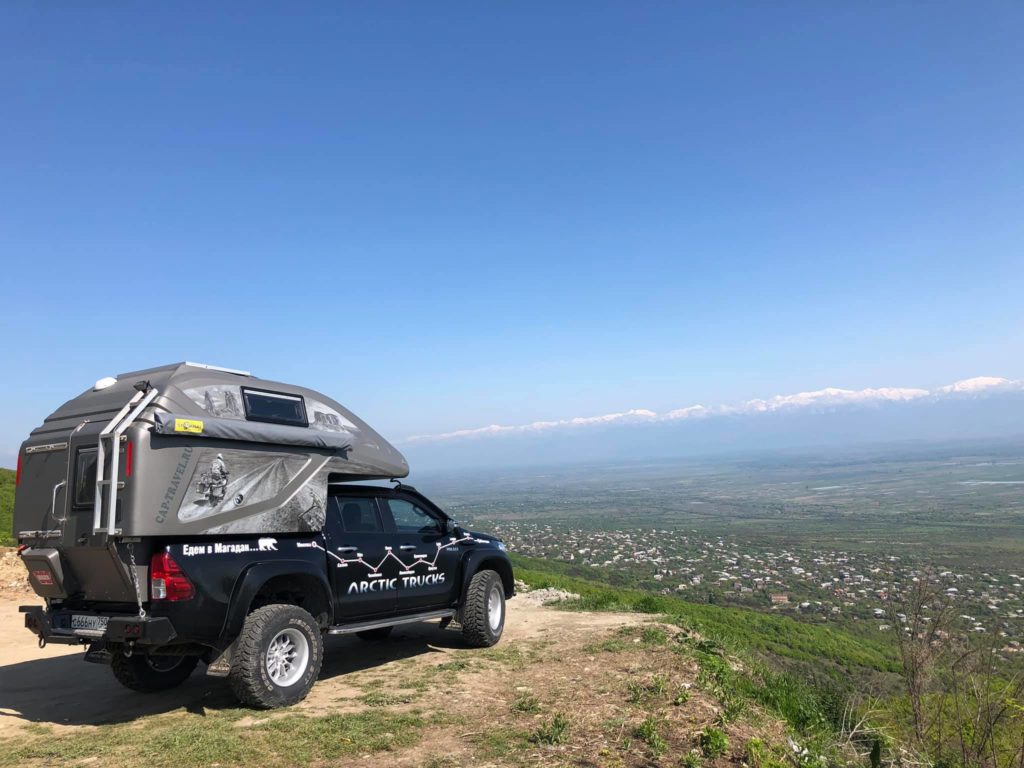
Signagi → Gori
Having left Signagi, we turned in the opposite direction and drove west along the Alazani Valley. On the way we made a stop at Bodbo. There is a nunnery and a temple where remains of Saint Nino, who brought Christianity to Georgia back in the 4th century, are buried. The temple and the view of the Alazani valley are very beautiful, but there are a lot of tourists. (41°36'22.99"N 45°55'57.9"E)
In the small town Gurjaani we ascended another mountain and there we saw an impressive monument to the character of a wonderful film "Father of a Soldier". Do you remember the film about the war and the father who was looking for his son, who was a tankman? The father went all the way to Berlin just with one PPSh-41. It's a very good movie. And the monument looks powerful too. (41°44′39.86″N 45°47′12.6″E)
Our next stop was in Gori. This town is famous for the fact that Joseph Stalin was born here. There is also probably the only large museum of "the leader of all peoples" in the world. To be honest, the museum wasn't that outstanding. The exposition seemed not to have been updated for fifty years. It mostly presents the photos, paintings and copies of the documents telling the generalissimo's biography. Some exhibits have been preserved: the chair on which comrade Stalin used to sit, the table at which comrade Stalin used to work, the pipe and cigarettes that comrade Stalin used to smoke, etc.
However, on the ground floor there is a small room decorated as the office of the NKVD investigator. In it you will see a table, two chairs, a lamp, an overcoat and a captain's hat with a crimson band. On the table there are typewritten forms with a vast signature and a sentence: "To shoot".
This is already a modern made exposition.
There is also a fortress in Gori, but we haven't been to it. According to my friends' reviews, there was nothing remarkable there. And we were just too lazy to visit it.
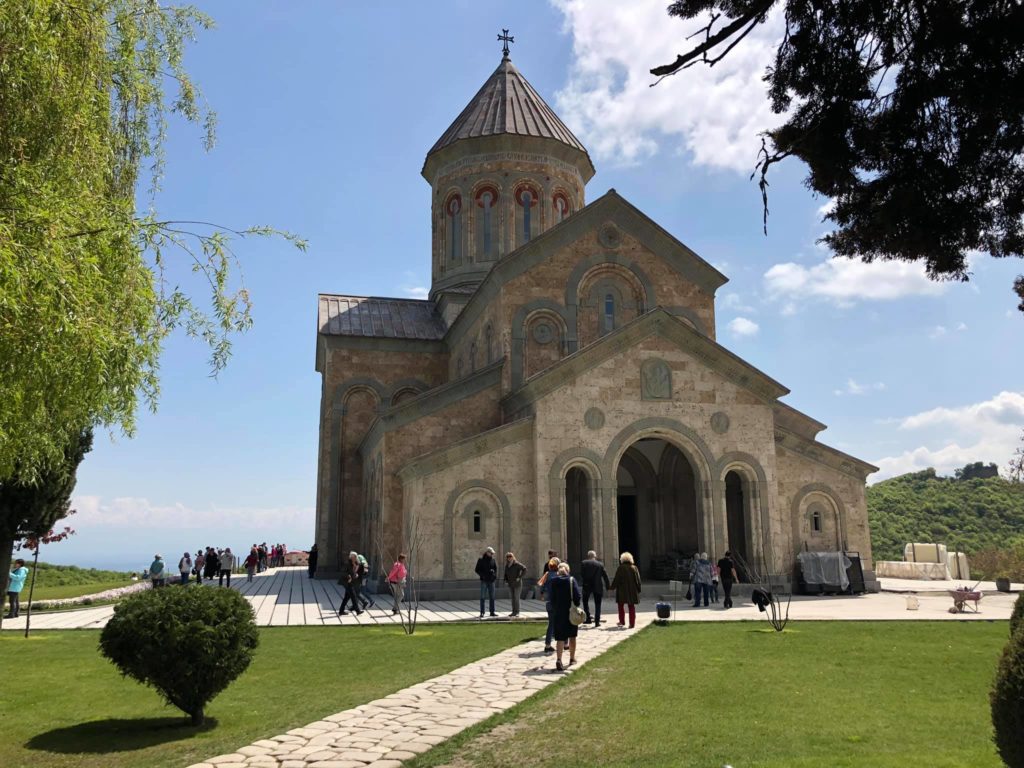
We left Gori and the navigator led us to the ancient cave city called Uplistsikhe along a very picturesque ground road, by the graveyard and steep cliffs.
This is a very exciting place on the banks of the Kura. If you happen to travel along the highway from Tbilisi to Kutaisi or Borjomi, take the turn there, it's located very close. (41°57′56.99″N 44°12′36.42″E)
We stayed overnight on the riverbank under the huge sheer cliff of the cave city. The sky was full of stars there!!!
Svaneti.
There is one region in Georgia that I have been dreaming of getting to for a long time, but still somehow had no opportunity to do it. This is the most remote area in the northwestern part of the country. There you will see snow-covered insurmountable mountain peaks; rocky roads that wind along the incredibly beautiful gorges; the Inguri river, which originates in the glaciers of the Caucasus, as well as the Svans' settlements with a thousand-year historical background and unique culture. All this is Svaneti.
If you drive along the Tbilisi-Batumi highway, turn to Zugdidi after passing by Kutaisi and then follow to the small town Jvari, you will see the road that goes up into the mountains. After a 110 km distance of a fantastically beautiful path you will reach the village Mestia, which is the administrative centre of Upper Svaneti, located at an altitude of 1500 m. And if you climb even higher, then a half-collapsed mountain ground road, which is 40 km long, will lead you to the village of Ushguli. From there you can enjoy a gorgeous view of the Caucasian ridge which separates the territory of Kabardino-Balkaria. There are only a few kilometers but it is very difficult to overcome them.
The Svans' settlements do not look like the typical Georgian ones. Svaneti has its own culture and architectural traditions, developed over centuries. Its distinctive feature is the high stone towers that served as defensive structures in the past and as housings in the peacetime.
Batumi is a resort city, a port city and an advertising image of Georgia for tourists. It's like a kind of local Sochi. The embankment has been restored, paved, significantly elongated and decorated with palm alleys and fountains. There are high buildings of world brand hotels of original design, numerous cafés, bicycle and electric cars rental. To cut a long story short, there is everything that an average tourist (who decides to spend the holidays at a nice resort) needs.
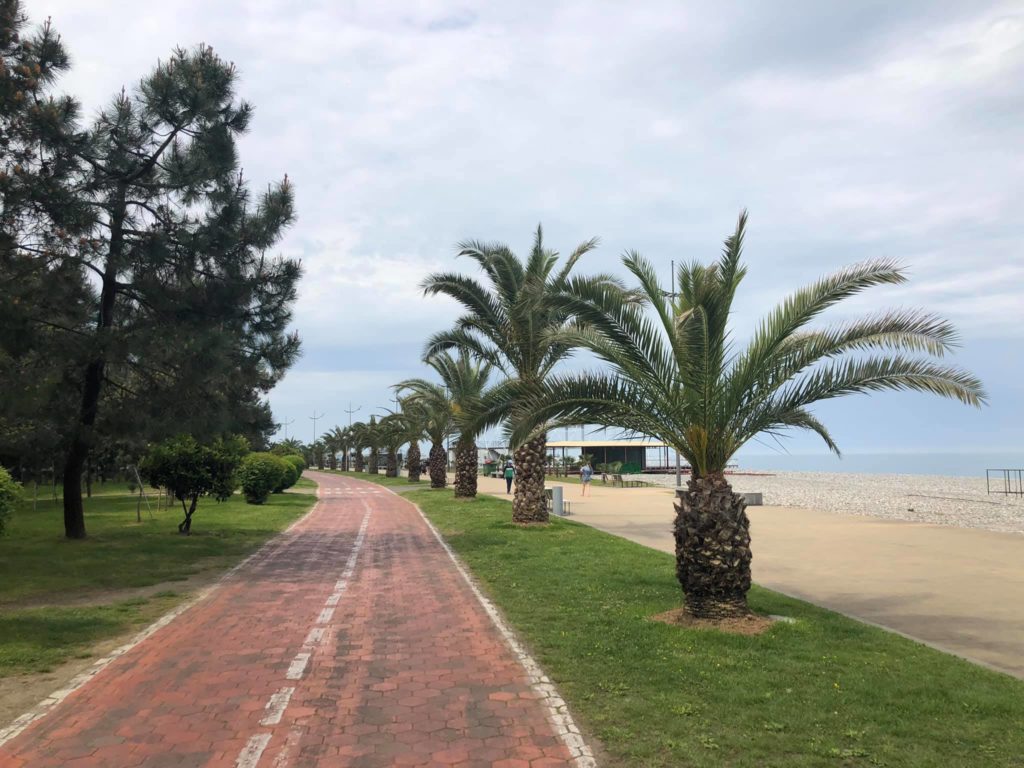
If you like this type of travelling, then you will be completely satisfied, I think. And if you get bored of lying on a clean pebble beach, sipping a Tsinandali from a three-litre bottle, you can go on an excursion "around the mountains and the waterfalls" for a little money. The friendly taxi drivers, who stand here on every corner and spread a standard advertising banner with pictures of all the sights of Georgia on the hood of their cars, will take you anywhere you want, simultaneously entertaining you on the way with their stories about how any of them served near Leningrad, worked in Novosibirsk or built something in the Moscow region.
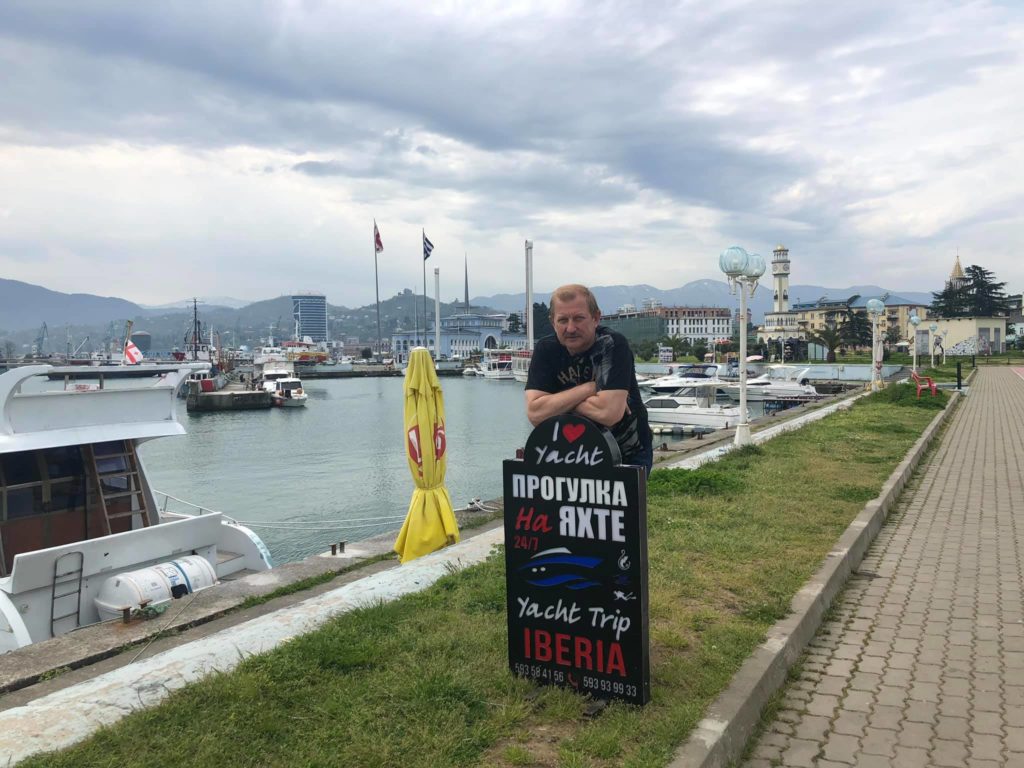
And if you travel on your own means of transport like me, then I recommend you to spend at least one day in this wonderful city. Without it your impression of Georgia will be incomplete.
You can return to Tbilisi by a highway, but there is another way, which is much more exciting, although a little more complicated. This is the Batumi-Akhaltsikhe road, which goes across the pass and by the settlement Khulo. (41°38'34.23"N 42°18'35.89"E)
Most of the way you will have to go along a collapsed ground road and at an altitude of 1700 m you will come across snow. At the top of the mountain the height of the snowdrifts makes up several metres so you have to go through a snow tunnel. But despite this fact the road is fine for SUVs and crossovers. It will also be a pleasure for you to pass it by motorbike.
On the way you can make a stop to see a beautiful waterfall in the village called Mahunzeti (41°34'29.86"N 41°51'29.97"E). The attraction is right near the road.
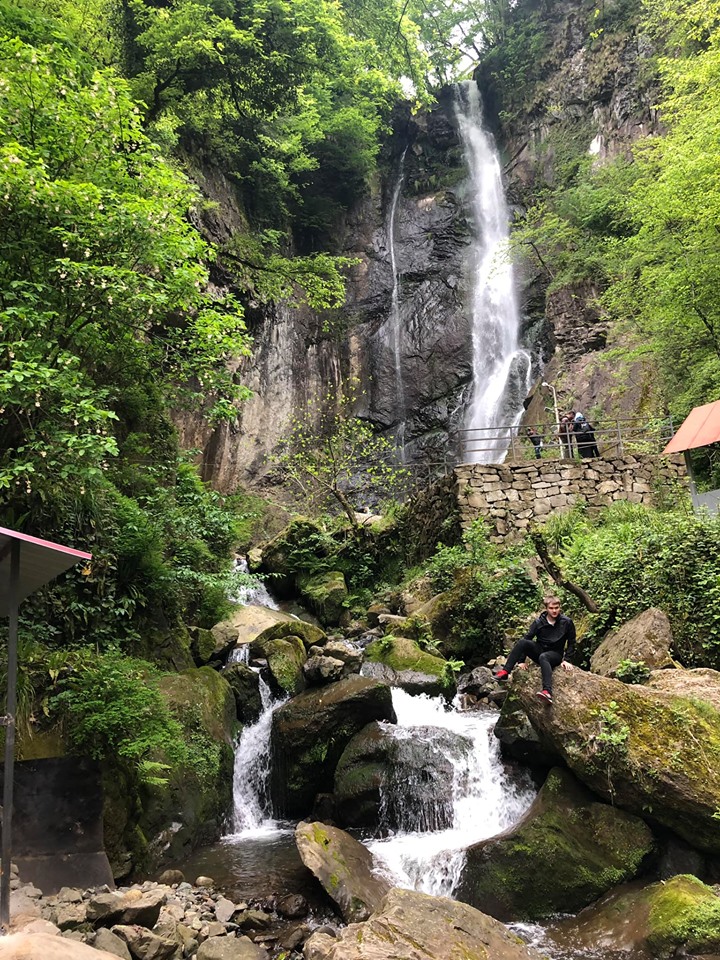
The length of the off-road distance is about 50 km. It will take you from 2.5 to 3 hours to pass it, including the short stops when you admire the views of the gorges, rivers and waterfalls.
In Akhaltsikhe you can stay overnight in any hotel you like and walk around the fortress named Rabat. This is a fully restored Turkish fortress of the 17th century (that's why it makes the impression of rather a new structure). Anyway the restoration is done excellently. (41°38'33.09"N 42°58'38.04"E)
And in Akhaltsikhe itself you can go to a café and suddenly come across your friend-traveller, who goes by motorbike from Armenia to Turkey and then to Europe across Georgia!
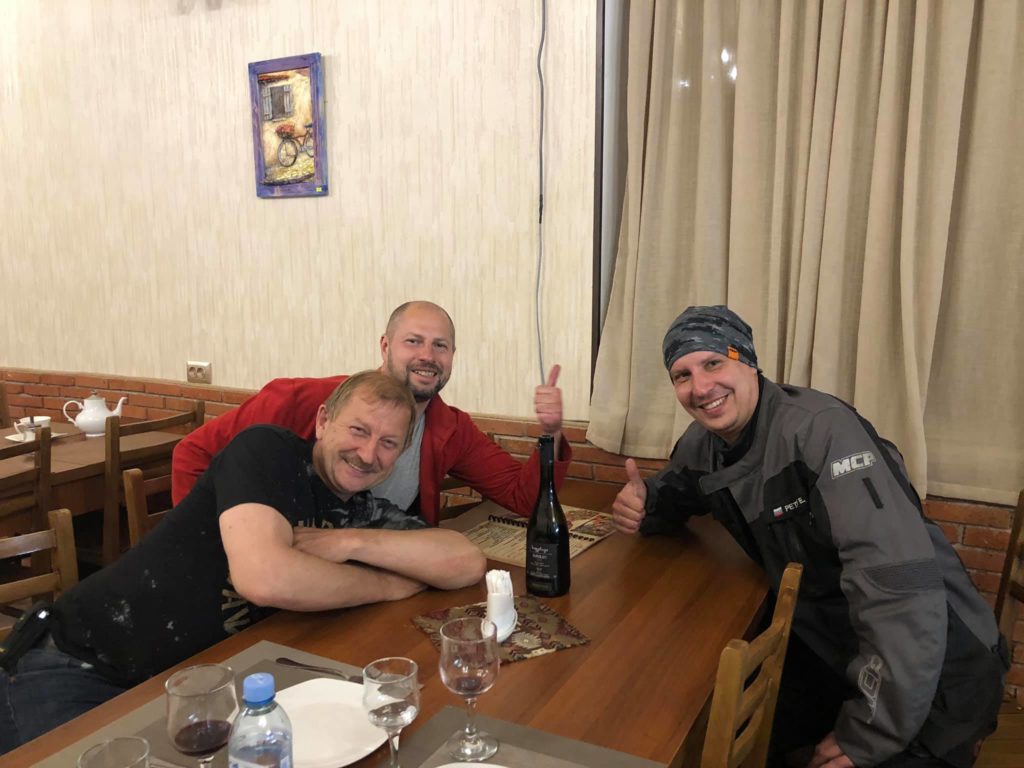
If you go 60 km south from Akhaltsikhe, you will find one more unique place in Georgia: the cave town Vardzia that was built in the 12th century.(41°22'45.36"N 43°16'55.67"E) It is not just a chain of caves cut in a huge rock. It was a real town with streets, stables and temples inside the mountain range. About 20 thousand people populated it in the past.
I strongly recommend you to visit this place if you will have a chance to do it.
After Vardzia you can cross the bridge over the Kura, follow the ground serpentine on the opposite side of the gorge to the village Apnia and enter a small and very modest church of St. Demetrius. (41°21'52.83"N 43°16'24.86"E) Going further along the high-altitude plateau (there is a ground road again) you will reach Akhalkalaki and Ninotsminda afterwards. And in case you want, you can go to Armenia, which is very close here (the border is just 25 km far from the town). Or you may turn north and three hours later you will be in Tbilisi.
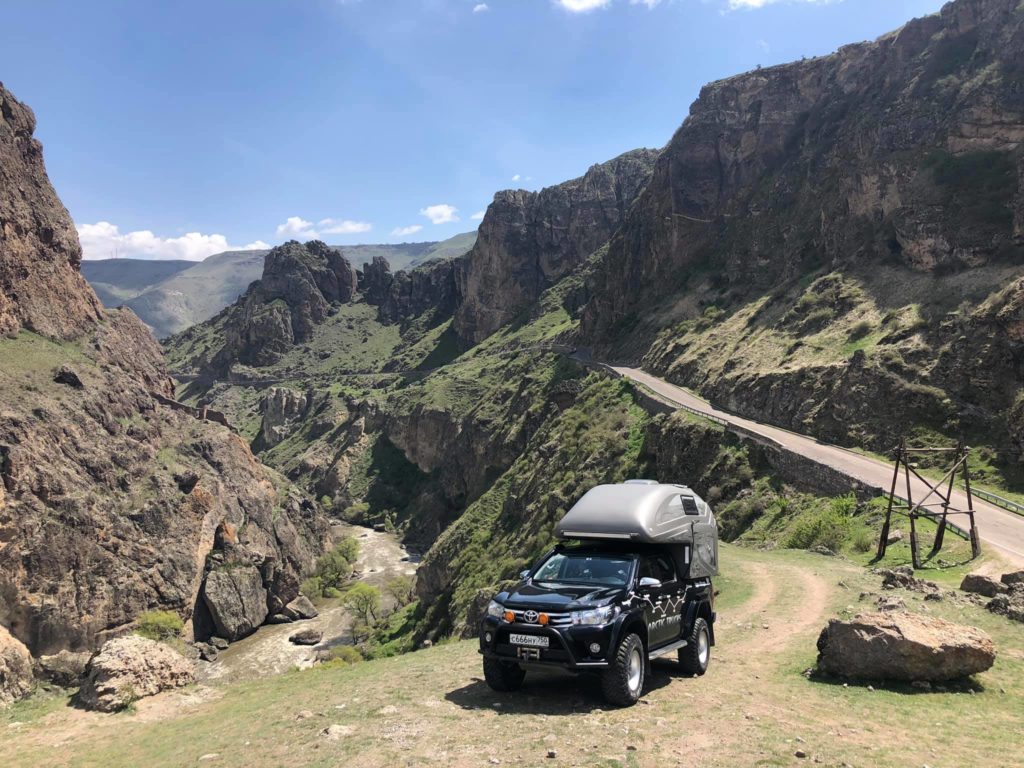
In the capital of Georgia our journey around this magnificent country came to an end. In the evening our Georgian friends invited us to have dinner together at a fine restaurant of national cuisine named "Rachis Ubani" (41°42'09.32"N 44°44'43.92"E). The delicious food, homemade wine and Georgian guitar songs, performed by the guests, appeared to be a bright conclusion to our adventure in sunny Georgia!
comments powered by HyperComments Cap-travel.ru
Cap-travel.ru